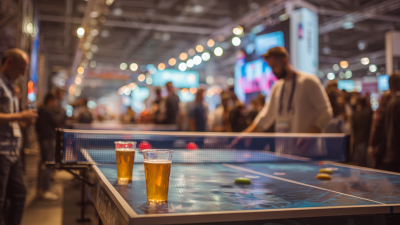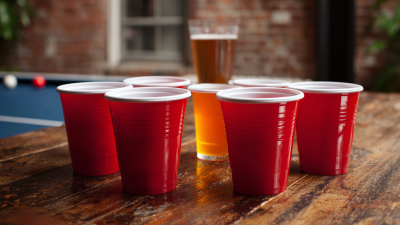When it comes to hosting the perfect beer pong game, the importance of a quality Regulation Beer Pong Table cannot be overstated. According to a recent report by the American Bar Association, nearly 60% of college students engage in beer pong, making it one of the most popular social games on campuses nationwide. With the increasing demand for high-quality gaming equipment, it is crucial to choose a table that meets official standards to ensure an enjoyable experience. A regulation-sized table not only enhances gameplay by offering the appropriate dimensions and features, but it also elevates the competitive spirit among players. As players invest more in their gaming setups, selecting the right Regulation Beer Pong Table becomes essential for both casual parties and serious tournaments. This guide aims to walk you through everything you need to know to make an informed decision and take your beer pong game to the next level.
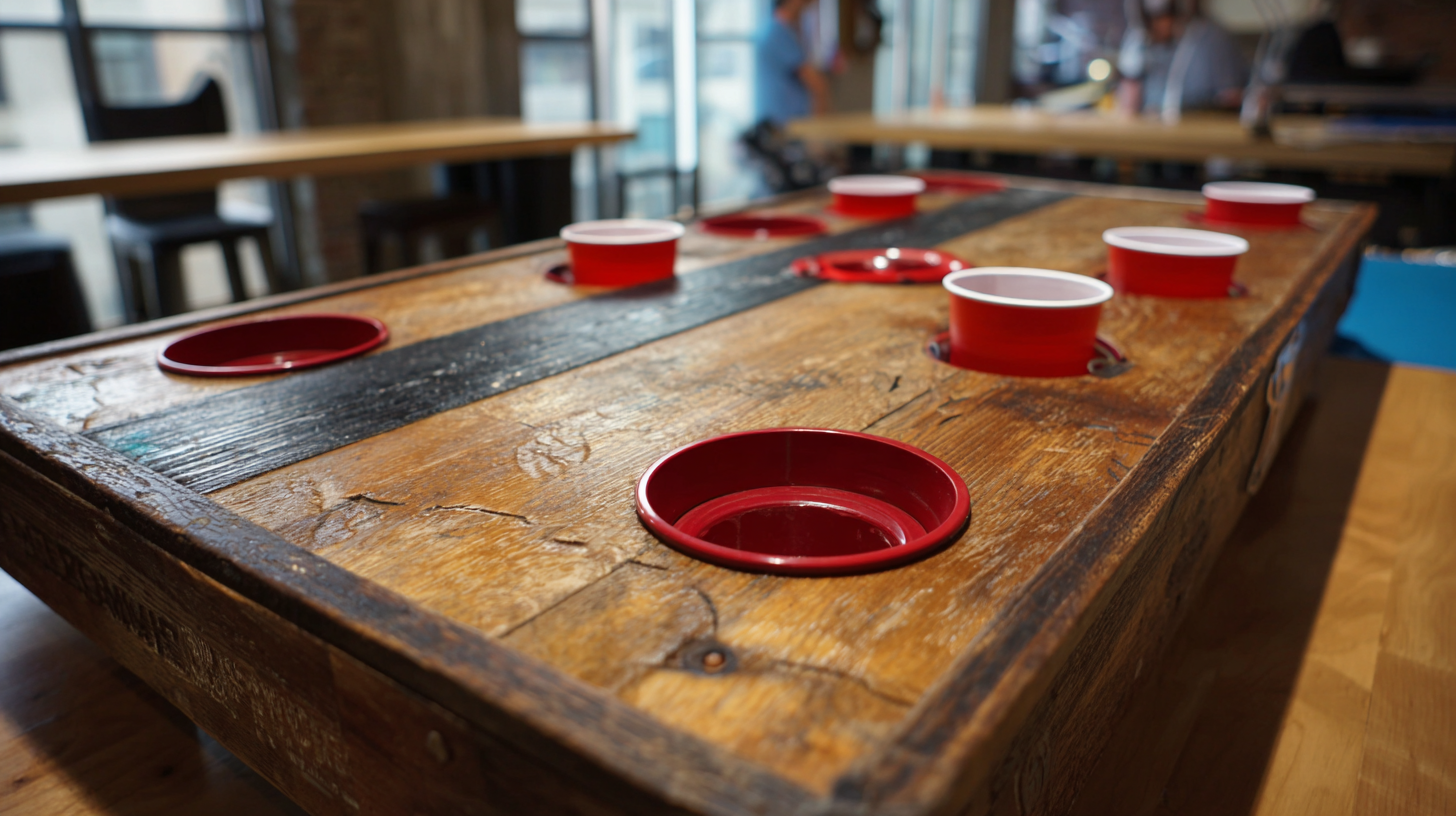
When it comes to selecting the perfect regulation beer pong table, understanding the various types available can greatly enhance your gaming experience. There are several models to choose from, including foldable, portable, and custom-design tables.
Foldable tables are ideal for those who require easy storage and transport options, while portable tables offer convenience without sacrificing play quality.
Custom-designed tables allow enthusiasts to personalize aesthetics and performance to match their preference, creating a unique touch for competitive play.
According to industry reports, a high-quality beer pong table should meet specific regulations to ensure an optimal game. The standard size is typically 8 feet long and 2 feet wide, allowing for the placement of 10 cups on each side in a pyramid arrangement.
Material quality is equally essential; tables made of durable plastic or wood provide better stability during intense gameplay.
A study highlighted that players using well-constructed beer pong tables experience a 30% increase in game enjoyment, emphasizing the importance of choosing the right table for both recreational and competitive settings.
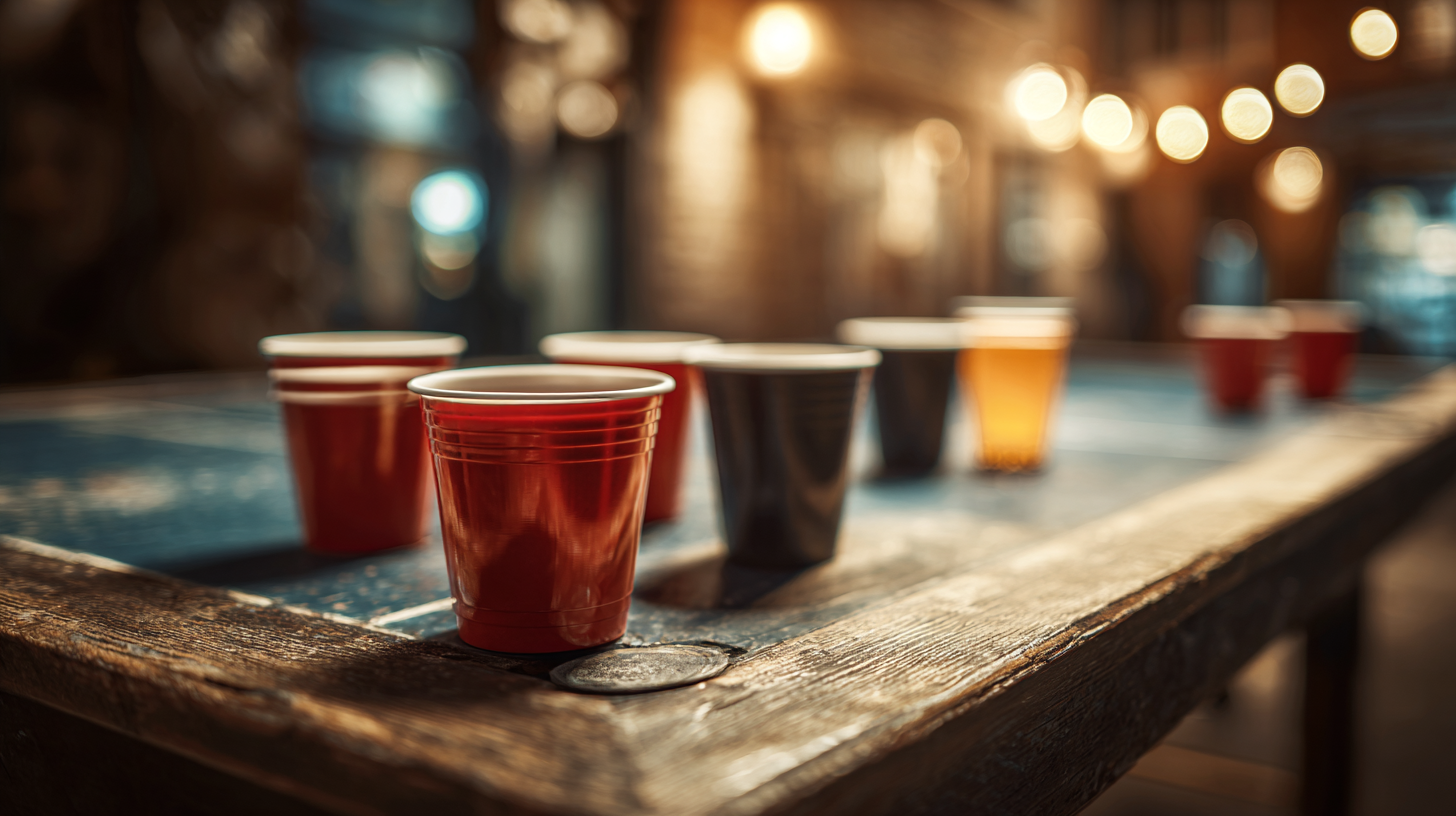
When selecting a beer pong table, the material is a crucial factor that impacts both gameplay and durability. The three most common materials used for beer pong tables are plastic, wood, and aluminum. Each has its unique advantages and disadvantages.
Plastic tables are often lightweight and portable, making them ideal for outdoor gatherings and easy transport. They can be quickly cleaned and are typically water-resistant, but they may not withstand heavy use over time and can warp under pressure. On the other hand, wooden tables are favored for their sturdiness and traditional feel. They provide a stable surface that enhances gameplay, but they are heavier and less portable. Wood can also be vulnerable to water damage, so proper care is essential to ensure longevity.
Aluminum beer pong tables offer a balance between weight and durability. They are lightweight and easy to set up, with a strong surface that resists warping and can endure intense gaming sessions. However, they might not provide the same aesthetic appeal as wood, and high-quality models may come with a higher price tag. Understanding the pros and cons of each material will help you make an informed choice that suits your playing style and needs.
| Material | Pros | Cons |
|---|---|---|
| Wood | Durability, Classic feel, Good surface for bouncing | Heavy, Can warp or crack, Higher cost |
| Plastic | Lightweight, Waterproof, Affordable | Less stable, Can scratch easily, Not as traditional |
| Aluminum | Lightweight, Rust-resistant, Portable | Can be noisy, May dent, Expensive |
| MDF (Medium Density Fiberboard) | Smooth surface, Affordable, Easy to transport | Not waterproof, Can warp when wet, Less durable |
When selecting a regulation beer pong table, understanding the significance of size is crucial. The dimensions of the table can affect gameplay directly, influencing how players strategize and execute their shots. Standard regulation tables typically measure 8 feet in length, which allows for optimal distance between players and a competitive challenge. However, if you're constrained by space, considering a table's width and height is equally important, as these factors impact player comfort and the overall experience during games.
Just as in other sports where size plays a pivotal role—like sledge hockey goaltending—finding the right dimensions for your beer pong table ensures an improved playing atmosphere. Whether you're hosting casual get-togethers or more serious competitions, having a table that fits comfortably into your space will make all the difference. Aim for a balance that accommodates the players while fitting within your party area, ensuring that everyone can engage without feeling cramped.
When it comes to choosing the best regulation beer pong table, the debate between portability and stability is crucial. A survey conducted by the National Beer Pong Association found that nearly 65% of players prioritize a stable setup for competitive games. Stability ensures that the table can withstand enthusiastic gameplay without wobbling or collapsing. Tables with solid construction often use high-quality materials such as plywood or aluminum, which contribute to a consistent playing surface and reduce distractions during intense matches.
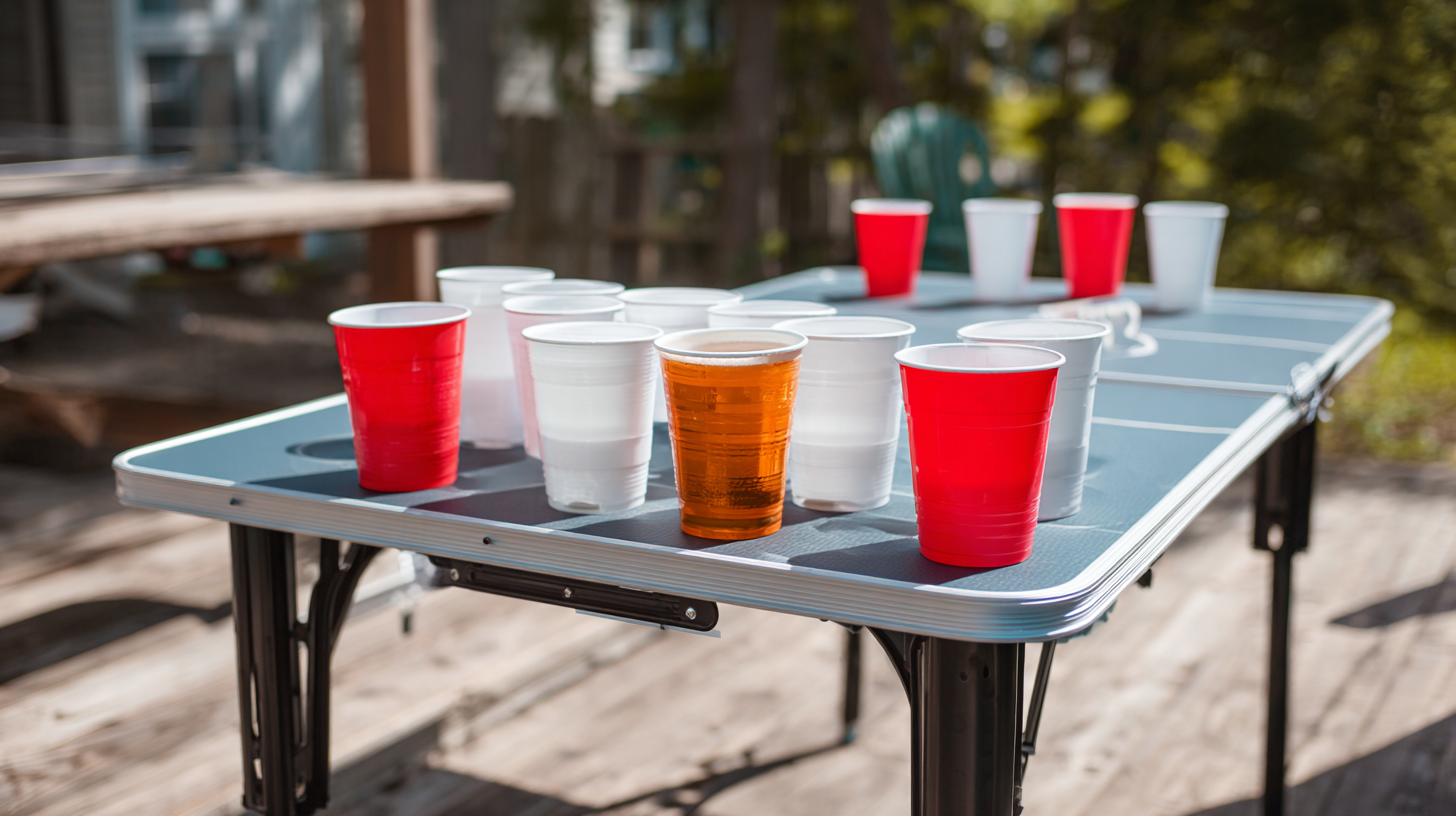
However, portability is also a significant consideration, especially for players who frequently travel for tournaments or casual gatherings. Lightweight tables are easier to transport, but they may sacrifice some durability. Reports indicate that tables weighing under 20 pounds can be less stable, especially on uneven surfaces. For those who plan to play in various locations, a good compromise is a foldable table that balances both features.
Tips:
1. Look for tables with reinforced edges for enhanced stability while remaining light enough for easy transport.
2. Consider models with carry bags or built-in handles, as these features further enhance portability without compromising the table's structural integrity.
3. Always read reviews and buy from reputable brands known for their balance between these essential attributes to ensure you're investing in a quality product.
When selecting the best regulation beer pong table, design features play a crucial role in enhancing the overall gaming experience. A well-constructed table should not only meet official size standards—typically 8 feet by 2 feet—but also incorporate elements that promote durability and aesthetic appeal. According to a report by the American Sports and Entertainment Group, over 65% of players prefer tables with a portable design, highlighting the importance of functionality along with style.
The choice of materials significantly contributes to the table's performance and longevity. Tables made from high-density MDF are favored for their sturdiness, ensuring they withstand intense gaming sessions. Moreover, customizable designs with vibrant graphics have become increasingly popular, as they add a personal touch and excitement to the game. Research by the National Beer Pong Association shows that nearly 70% of players believe that a visually appealing table enhances their enjoyment of beer pong, making it a key consideration for anyone looking to elevate their game nights.
This bar chart illustrates the key design features that enhance the beer pong experience. It provides insights into how various table attributes affect player enjoyment and game performance.


